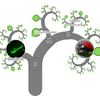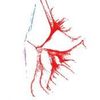15.8.2014 | 13:30
Bryngeddan og ţróun fiska
Mánudaginn 18. ágúst mun Dr. John Postlethwait halda hádegiserindi á vegum Líf- og umhverfisvísindastofnunar.
Í fyrirlestrinum mun Dr. Postlethwait prófessor viđ Institute of Neuroscience, University of Oregon, Eugene, fjalla um rannsóknir sínar og samstarfsmanna sinna á erfđamengi s.k. bryngeddu (Lepisosteus aculatus), sem er ein 7 frumstćđra tegunda beinfiska frá öđru blómaskeiđi beinfiska á miđlífsöld sem enn eru uppi. Greint verđur frá ţví hvernig rannsóknir á erfđamengi ţessara „lifandi steingervinga“ geta nýst viđ ađ varpa ljósi á ţróun genamengja, gena og genastarfsemi nútíma beinfiska og spendýra.
Titill erindisins er: Linking Teleost Fish Genomes to Human Biology
Í fyrirlestrinum mun Dr. Postlethwait prófessor viđ Institute of Neuroscience, University of Oregon, Eugene, fjalla um rannsóknir sínar og samstarfsmanna sinna á erfđamengi s.k. bryngeddu (Lepisosteus aculatus), sem er ein 7 frumstćđra tegunda beinfiska frá öđru blómaskeiđi beinfiska á miđlífsöld sem enn eru uppi. Greint verđur frá ţví hvernig rannsóknir á erfđamengi ţessara „lifandi steingervinga“ geta nýst viđ ađ varpa ljósi á ţróun genamengja, gena og genastarfsemi nútíma beinfiska og spendýra.
Titill erindisins er: Linking Teleost Fish Genomes to Human Biology
Ingo Braasch, Peter Batzel, Ryan Loker, Angel Amores, Yi-lin Yan, and John H. Postlethwait
Fyrirlesturinn verđur haldinn kl. 13:30-14:30 mánudaginn 18. Ágúst í stofu N-131 í Öskju og er opinn öllum.
 Mynd af Bryngeddu er af Wikimedia commons.
Mynd af Bryngeddu er af Wikimedia commons. Ágrip erindisins á ensku.
Spotted gar (Lepisosteus oculatus), a holostean rayfin fish and one of Darwin’s defining examples of ‘living fossils’, informs the ancestry of vertebrate gene functions and connects vertebrate genomes. The gar and teleost lineages diverged shortly before the teleost genome duplication (TGD), an event with major impacts on the evolution of teleost genomes and gene functions. Evolution after the earlier two vertebrate genome duplication events (VGD1 & VGD2) also complicates the analysis of vertebrate gene family history and the evolution of gene function because lineage-specific genome reshuffling and loss of gene duplicates (ohnologs) can obscure the distinction of orthologs and paralogs across lineages and leads to false conclusions about the origin of vertebrate genes and their functions. We developed a ‘chromonome’ (a chromosome-level genome assembly) for spotted gar. Analysis shows that gar retained many paralogs from VGD1 & VGD2 that were differentially lost in teleosts and lobefins (coelacanth, tetrapods). We further show that spotted gar can be reared as a laboratory model enabling the functional testing of hypotheses about the origin of rayfin and lobefin gene activities without the confounding effects of the TGD. The spotted gar genome sequence also helps identify cis-regulatory elements conserved between teleosts and tetrapods, thereby revealing hidden orthology among regulatory elements that cannot be established by direct teleost-tetrapod comparisons. Using whole genome alignments of teleosts, spotted gar, coelacanth, and tetrapods, we identify conserved non-coding elements (CNEs) that were gained and lost after various key nodes of vertebrate evolution. This information enables us to study on a genome-wide scale the role of regulatory sub- and neofunctionalization after the TGD and helps infer targets of cis-regulatory elements that we test in vivo using transgenic reporter assays. This living fossil links teleost genomes to human biology in health and disease.
Vísindi og frćđi | Breytt s.d. kl. 13:36 | Slóđ | Facebook | Athugasemdir (2)
Bloggfćrslur 15. ágúst 2014
Nýjustu fćrslur
- Eru virkilega til hćttuleg afbrigđi veirunnar sem veldur COVI...
- Grunnrannsóknir eina ađferđin til ađ skapa nýja ţekkingu og e...
- Lífvísindasetur skorar á stjórnvöld ađ efla hlut Rannsóknasjó...
- Eru bleikjuafbrigđi í Ţingvallavatni ađ ţróast í nýjar tegundir?
- Hröđ ţróun viđ rćtur himnaríkis
- Leyndardómur Rauđahafsins
- Loftslagsbreytingar og leiđtogar: Ferđasaga frá Suđurskautsla...
- Genatjáning í snemmţroskun og erfđabreytileiki bleikjuafbrig...
- Fjöldi og dreifing dílaskarfa á Íslandi
- Stađa ţekkingar á fiskeldi í sjó





